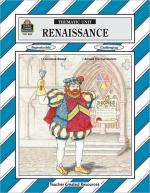|
This section contains 1,629 words (approx. 6 pages at 300 words per page) |

|
Literacy and Class. In early modern Europe the ability to read and write was a mark of social distinction and authority. For most of the Middle Ages, literacy was a skill largely confined to the clerical elite, and in medieval parlance usually referred to the ability to read and write Latin, the language of the Church, not the vernacular. The proliferation of pious images of aristocratic patrons reading, especially devotional manuals and prayer books such as Books of Hours, suggests that many upper-class women as well as men probably could read by the fourteenth century. Many merchants and tradesmen possessed a kind of functional literacy that allowed them to carry on correspondence and keep account books necessary for business. By the sixteenth century both humanists and reformed-minded theologians, Catholic and Protestant, encouraged city fathers across western Europe to set up grammar schools, which, as...
|
This section contains 1,629 words (approx. 6 pages at 300 words per page) |

|




